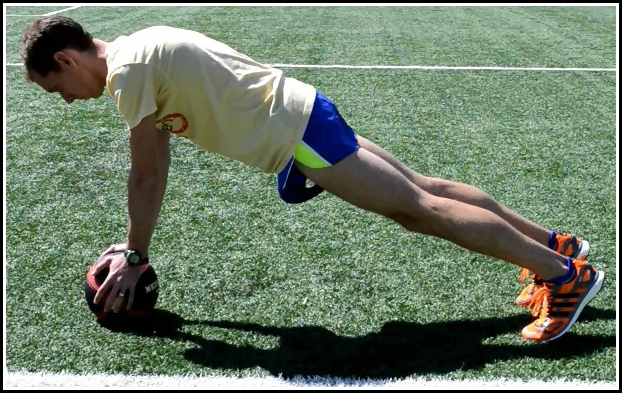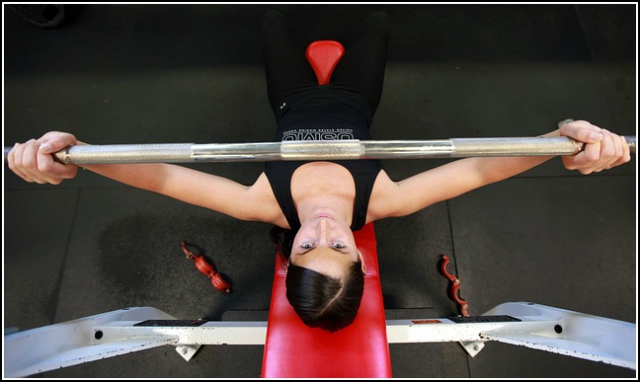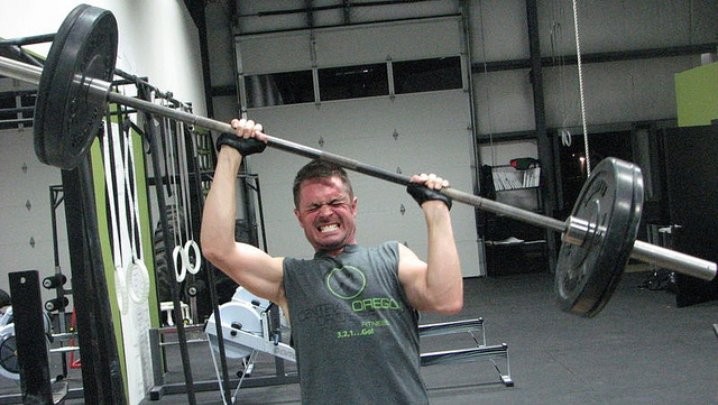Recently I polled my readers on their top struggles with running. And today I’m answering your top questions about strength exercises.

I love sending you surveys – and I really appreciate you taking the time to complete them. They help me create coaching material that solves your specific problems.
This level of attention is what has set Strength Running apart over the years. And you can rest assured that every post, coaching program, and resource that I have for you is rigorously tested before you ever see it.
Today, we’re discussing the best strength exercises for runners. Take a look at some of your questions:
What kind of strength exercises must I do? When? How many times in a week?
What are the best exercises to do to stay injury free?
Strength training… how many times per week and what are the best exercises?
What strength training should I be doing? I don’t want to “bulk up” but feel I should be doing some strength training.
Should I be doing any upper body exercises or focus mainly on my core?
Should I be doing any leg work, or does running work them enough? Will any leg work just wear them out and cause an injury?
As you can see, this is a hot topic!
Thankfully, strength training for runners is one of my specialties. In fact, Runner’s World asked me to contribute this strength routine to their Body Shop series last month.
And now we’ll go over the nuts and bolts about strength exercises for runners. Let’s start with some basic Q&A.
What are the best strength exercises for runners?
The best strength exercises for runners have two characteristics:
- They prevent injuries by focusing on the specific needs of runners (hip and glute strength)
- They are compound, multi-joint movements like squats (while machines in the gym count, they are not ideal)
For most runners, the largest benefit of strength training is a reduction in running injuries.
With stronger muscles, connective tissues, joints, and more resilience to fatigue, you’ll get hurt less often. Instead of sitting on the sidelines, you can enjoy running.
Here is a list of the best strength exercises for runners:
- Squat
- Deadlift
- Lunge
- Push-up
- Plank
Notice anything about these exercises? They’re simple, basic movements that all of us as runners should be able to do.
And with countless variations of each exercise, you can always keep things interesting.
Make sure to keep reading below to see the specific routines and video demonstrations I recommend.
How often should I strength train?
All day, every day! Just kidding. Who are we, body builders?
Most runners will get enormous benefits from 20 minutes, 3-5 times week. On some days, you can actually do less than 20 minutes.
A helpful strategy is what I call “sandwiching” – you “sandwich” your run between a dynamic warm-up and a strength routine.
Here’s an example of a training schedule that shows this principle in action:

Here there is one core workout (Standard Core), a gym session (Pike Workout), and a runner-specific bodyweight workout (Stiletto Routine).
Some of these are from Injury Prevention for Runners (learn more about that here) and others are discussed in more detail later in this post.
In a nutshell:
- Before every run, complete a dynamic warm-up routine (like the Mattock Warm-up)
- After every run, complete a series of strength exercises for runners (choose a routine below)
- If you want to lift heavier weights in the gym, that can be done twice per week
For more nuance about strength training benefits and how to schedule these workouts, check out this interview I did with Runners Connect:
One final tip: strength workouts should complement your running, not detract from it. If you’re so sore from strength exercises that your long run or faster workout is compromised, tone down the intensity.
You can lift less weight or reduce the number of reps or sets that you’re completing. But no matter what, remember that strength exercises should make your running better.
Should I do strength exercises for my legs, core, or upper body?
All three!
You must be a good athlete to be a good runner – and athletes are strong everywhere.
Most of the routines in this article are focused on the lower body and core. But with push-ups, chin-ups, and pull-ups you’ll get enough upper body work completed.
And you don’t need a gym, either.
With just a few simple pieces of equipment, you’ll have your own home gym. I recommend:
- A resistance band (I recommend a multi-pack with several varying strengths)
- Different medicine ball sizes (buy a Valeo ball – they’re awesome)
- A “door gym” for pull-ups and push-ups (this is the exact model I have)
- Assorted kettlebell sizes (20-40 pounds should do the trick depending on your strength)
With these, you’ll be able to get stronger with no monthly gym fees and a total cost of less than $100.
Will strength training make me bulk up?

No, it won’t. Many of my female clients have this concern, but it’s actually really hard for women (and men) to put on muscle while also running.
You need to eat an enormous amount of food to fuel muscle growth. But if you’re running even just 15 miles per week, much of that energy is spent fueling your runs.
Plus, you need to lift very heavy weight to put on muscle. Bodyweight strength exercises and low resistance exercises with medicine balls or resistance bands make it far more difficult.
Here’s a simple way to think about bulking up while running: running is catabolic – it breaks down muscle. Strength training is anabolic – it builds muscle.
So you can see that doing both makes it very hard to build muscle since your two primary forms of exercise are at odds with one another. This is why you’ll never see body builders running when they’re building muscle.
But if distance runners lift heavy, instead of gaining muscle, they’ll just get really strong. This is exactly what we’re looking for, so keep strength training!
Do strength programs like CrossFit or P90X work for runners?
Yes… but mostly no.
Will these types of fitness programs increase your strength? Most likely. Especially if you haven’t been doing any strength exercises (almost anything will make you stronger if you’re starting from a blank slate).
But are they too intense for endurance athletes?
Do they include other exercise (like sprints or tire flipping) that could detract from your running?
Is the injury risk significantly higher?
YES to all three!
You can read a thorough discussion of why CrossFit Endurance is not a good program for runners here, followed by part two here.
Much more detail on CrossFit (and P90X, since they’re similar in structure) can be found in those two articles than I care to rehash here.
The decision is yours, of course. If the only way you’ll lift is at a CrossFit class, then that’s better than nothing. Just understand it’s not ideal and the injury risk is higher.
And when in doubt, just listen to the wise, timeless words from Dom Mazetti.
Recommended strength exercises for runners
Instead of focusing on strength exercises, focus on strength routines. They have a specific pattern that’s important for runners.
Strength Running is known for its runner-specific routines that help runners get stronger and prevent injuries.
You might be familiar with our four most popular strength workouts:
The Tomahawk Workout
This is a more challenging medicine ball workout that focuses on the lower body and core. It should be completed 1-2 times per week (less if you lift in the gym).
Make sure you’re able to complete the easier routines below before doing Tomahawk – it’s more advanced, after all.
The ITB Rehab Routine
Let’s ignore the production quality of the video for now (theres an updated, HD video in Injury Prevention for Runners).
This routine should be done by every runner, at least twice per week. If you suffer from injuries more than you’d like (especially ITBS), I’d do it three times per week.
Here we focus on runner-specific strength, particularly in the glutes and hips. These muscles are critical for preventing injuries since they control your stride and provide stability.
Many running injuries – even those not associated with the hip area like runner’s knee – can be traced to weak hips.
The fix? Get to strengthening your hips with this routine!
The Standard Core Routine
This is a “bread and butter” core workout that should be the staple of all of our core strengthening. Every runner should do this routine 1-2 times per week.
It focuses on the entire core region (not just your abs!), including the obliques, lower abs, hips, glutes, and hamstrings.
If you can do three sets of these six strength exercises for one minute per exercise, you’re stronger than most runners and will likely get injured far less frequently.
The Gauntlet Plank Workout
This strength workout is a series of plank exercises. But unlike the traditional plank, this routine has quite a few variations on the standard exercise!
Runners are creatures of habit and we tend to stick with what works – including the plank exercise. But varying the plank and including dynamic movements and different positions, we’re better able to build core strength.
If you find yourself doing the same series of planks, switch it up and try to get through all 11 of these variations. Your core will definitely notice the difference.
MetCon Alpha
If you need more of a metabolic conditioning workout, this routine will increase your heart rate and provide more of a cardiovascular benefit.
Cannon Core
This dynamic core workout is a leveled, balanced, intermediate routine for endurance runners.
Mace Routine
The Mace Routine helps you prevent injuries by building single leg strength. If you have muscle imbalances, this routine will be quite helpful.
Other Routines
There are a lot more routines that I’ve developed, including:
- Claymore – bodyweight workout focusing on full body strength
- Standard Core (updated with new variations)
- Ballista – runner-specific exercises that improve your ability to move in multiple planes of motion
- Pike – gym workout focusing on full body strength
- ITB Rehab Routine (updated with new exercises)
- Stiletto – runner-specific glute and hip strength
- Chakram – barefoot balance and proprioception
- Sabre Warm-up (updated version of the Standard Warm-up)
- Quickie Warm-up – a short dynamic stretching routine that you can do if pressed for time
Each is filmed in HD video with a narrated overview, PDF instructions that explain how to do each exercise, and step-by-step details on when to do every routine.

They’re all included in Injury Prevention for Runners, which also comes with 120+ pages of coaching lessons, training plans, more video demonstrations, and expert interviews.
Learn more about the program here.
Putting it All Together
I know this stuff can be confusing. I never knew runners should strength train until I had already been running for over four years!
But starting a strength program can be VERY simple: simply “sandwich” your runs between dynamic warm-up exercises and a 10-20 minute strength routine like the video demonstrations above.
For most runners, that’s all you need.
But if you’re particularly injury-prone, don’t have a background playing another sport, or you want to take your running to the next level, you can always do more.
Injury Prevention for Runners has a full suite of strength routines, as well as expert interviews, training plans for beginner or advanced runners, and HD video demonstrations.
You’ll be amazed by the variety of runners (like Rik and Aimee) that have seen enormous progress by investing in the program.
It works for the ladies out there – and the guys. Older runners. Younger runners. And even experienced runners like myself (I did Ballista this morning!).
Have any questions for me? Wondering what strength work is best for YOU individually?
Let me know how I can help! And don’t forget to join my free injury prevention group here. You’ll learn a lot 🙂
– Jason.
